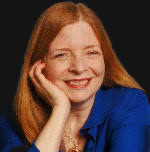What I’ve Learned about Convention Accessibility
 by Kate Heartfield
by Kate Heartfield
In early 2016, I contacted my local speculative-fiction convention and somewhat nervously offered my services as a volunteer coordinator for accessibility. Like many in the SFF community, I was angry and disheartened at the lack of accessibility at so many events.
I was nervous because, as someone who is not disabled, I was far from expert. But I was willing to learn, and I had the experience of family members to draw on. And I believed it was important work.
Can*Con is in Ottawa, Canada in October. My job is pretty minor: I wrote our accessibility policy and revise it every year, and I advise the committee about how to implement it when we have particular problems or concerns. Most importantly, I’m there as the dedicated person to field questions or concerns.
Here are a few of the things I’ve learned.
- There are many resources available, even if you’re on your own and don’t know where to begin. I took a free online accessibility course geared toward volunteers in my city, and based on local legislation. The SFWA accessibility checklist was enormously helpful to me, as was the list of accessibility policies at the Geek Feminism Wiki.
- The whole convention committee has to be on board. Programming policies affect accessibility. So do registration procedures, party plans, restaurant guides. If anyone involved shrugs it off, accessibility will suffer. From the beginning, every person on the committee of Can-Con, and every volunteer, has been entirely supportive of me and the policy. When I bring a concern to the committee, the response is always constructive and never defensive. There are limits to what we can do, as a small but growing convention, and so much depends on the physical accessibility of the venue itself. But I’m learning that the limits are actually a lot farther away than they might appear, and with good people working together, a lot is possible.
- Listen to the community. With limited resources, we have to decide where to put our money and energy. It’s hard to know which improvements are non-negotiable must-haves, and which are nice things to offer if we can. So, we frequently solicit feedback from the attendees and participants, and we really listen to what they say. We can’t always implement a perfect solution immediately, but we always address it. This feedback also helps me do my job of advising the committee. If someone with relevant life experience says an improvement is necessary, that carries a lot more weight than me saying that it might be a good idea.
- Involve the whole community. So much of accessibility comes down to respect. When people are reminded to end panels on time, to speak up, to leave space, to clear doorways, the impact is noticeable. It’s about changing the culture, as much as anything. One of the big concerns people have about accessibility policies is the fear that people who don’t actually need the supports will abuse them or take advantage of them. (Free passes for support people, for example, or a policy allowing service animals, or chairs set up beside the registration queue.) We have not witnessed this at Can-Con at all. The whole community takes pride in how seriously the convention treats accessibility. I smile when I remember a moment at the 2017 convention when several people burst out of a panel room saying, “There’s someone here who needs a chair! Where’s the accessibility coordinator?” in the same breathless tones someone on an airplane might use for, “Is anyone here a doctor?”
- Accessibility is about inclusion, and it’s a broader topic than you might think. Mobility barriers are probably the first thing that comes to mind, and they’re hugely important, but they’re not the whole picture. Accessibility is also about making sure that everyone is called by the correct pronouns and has access to a washroom where they’ll be safe and comfortable. It’s about trying not to trigger allergies and sensitivities. It’s about making sure that people have the supports they need. One of the most frequent requests we’ve had is simply for quiet recovery space.
- Signs are magic. With a bit of tape, paper, and marker, you can declare seating areas near the front for people who need to be close to hear or see; you can mark off space for wheelchairs and other mobility devices; you can reserve elevators or make washrooms all-gender. You can say, “By the power vested in me as accessibility coordinator, I declare that this chair is for the use of anyone who needs it in the registration queue” and people will nod and obey. Sorcery! Of course, you have to be respectful of the people whose facilities you’re using, but a few temporary pieces of paper can make a space much more accessible.
- Accessibility is a process. We get better at it every year, at Can-Con, but we know we have a long way to go. Every time we listen to someone’s concern and try to address it, we’re making our community bigger and more inclusive. We’re also, incidentally, reminding the hospitality industry that their customers want accessible venues and policies.
•••
Kate Heartfield’s short fiction has appeared in Strange Horizons, Escape Pod, Daily Science Fiction and elsewhere. Her website is heartfieldfiction.com and she is on Twitter as @kateheartfield.


